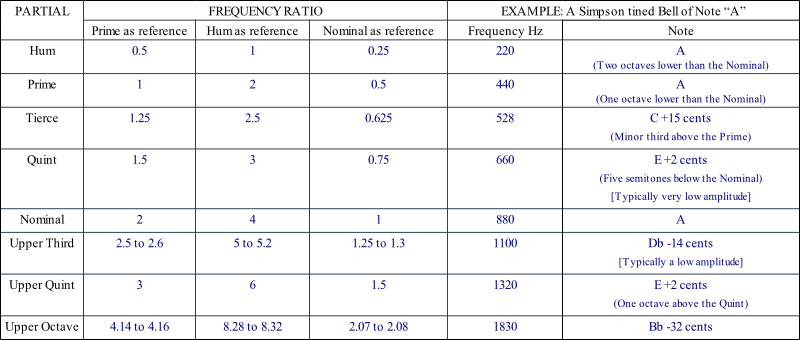


UK Registered Charity Number: 1154107

Conservation by Re-use
Helping churches acquire surplus and/or redundant bells to be hung for
English-style full-circle bell-ringing.


 Index
Previous page
Next page
Index
Previous page
Next page

Principal Partials of a Simpson Tuned Bell
A change to Simpson tuning might not always be advantageous for "higher numbers" of ringing bells as the duration of the Strike Note appears to be comparable with the gap between successive bells striking (approximately 200mS for 12 bell ringing). This makes the bell less distinct than bells of a shorter Strike Note duration.
Canon Simpson thought that ancient bell-founders might have intended that the Hum, Prime and Nominal partials should be octaves apart. There is some evidence to support this theory as many of the bells cast by the Hemony9 brothers have this relationship. The author has discovered an almost perfect Simpson tuned bell cast at the Bristol foundry circa 1400 whose harmonic ratios are (Hum as reference) 1 : 1.99 : 2.43 : 2.86 : 4.01 : 5.01 : 5.93 : 8.08. Were these lucky castings, or did the founders know more about casting and tuning bells than their successors? More details about this bell.
Sound of Bells – Simpson’s Hypothesis continued
The table shows the frequency ratios and a hypothetical example of a Simpson tuned bell of note "A". It does not matter which partial is used as reference; Simpson's article used the Prime, British bellfounders use the Nominal and vibrational engineers use the lowest frequency - the Hum. For convenience the table shows all three ratios.